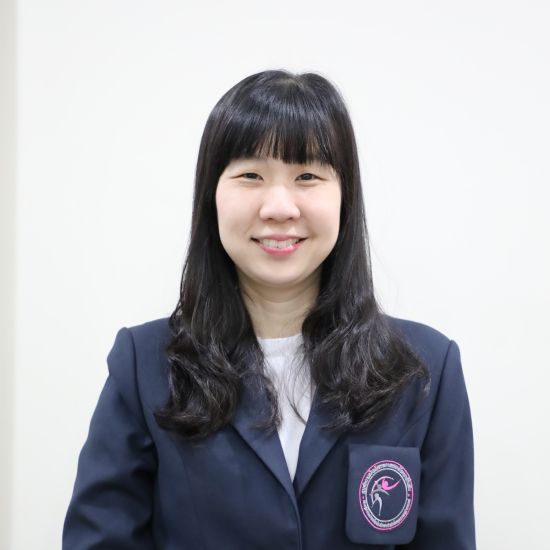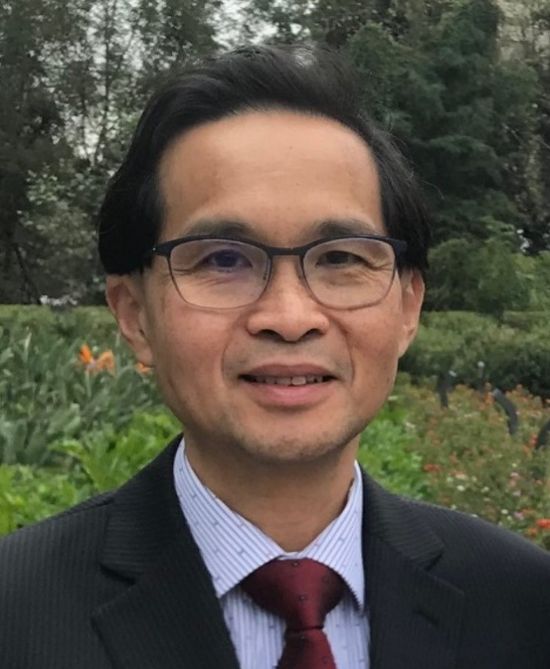Time slot's time in Taipei (GMT+8)
2025/11/23 10:00-12:30 Room 201 ABC
- SYMPOSIUM 17 Movement Disorders
Open the Casement of Hyperkinetic Movement Disorders by Neurophysiology
- Time
- Topic
- Speaker
- Moderator
- 10:00-10:30
- Tremor syndrome and tremor in dystonia: the differential viewpoints from pathophysiology
- Speaker:
Pattamon Panyakaew
- Moderator:
Yi-Cheng Tai
- Pattamon Panyakaew
- MD, MSc
-
Consultant Neurology, Chulalongkorn Excellence Centre on Parkinson’s Disease and Related Disorders
Division of Neurology, department of medicine, faculty of medicine, Chulalongkorn University
E-mail:ppanyakaew@yahoo.com
Executive Summary:
Pattamon Panyakaew, MD., is currently the assistant professor of neurology and movement disorders specialist at the Chulalongkorn Excellence Center on Parkinson's Disease and Related Disorders, Chulalongkorn University, Bangkok, Thailand. She was trained as a neurology resident and received her fellowship in movement disorders at the same institution. She pursued a fellowship in clinical neurophysiology in movement disorders at the National Institutes of Health, USA.
She has several publications in dystonic tremor, clinical neurophysiology in tremor, abnormal gait and balance in Parkinson’s Disease, and serves as a guest Editor of the special tremor issue in the Dystonia journal.
Pattamon Panyakaew, MD., is currently the assistant professor of neurology and movement disorders specialist at the Chulalongkorn Excellence Center on Parkinson's Disease and Related Disorders, Chulalongkorn University, Bangkok, Thailand. She was trained as a neurology resident and received her fellowship in movement disorders at the same institution. She pursued a fellowship in clinical neurophysiology in movement disorders at the National Institutes of Health, USA.
She has several publications in dystonic tremor, clinical neurophysiology in tremor, abnormal gait and balance in Parkinson’s Disease, and serves as a guest Editor of the special tremor issue in the Dystonia journal.
Lecture Abstract:
Tremor is defined as rhythmic oscillatory movements of a body part. Rhythmic refers to regular recurrence with constant intervals, while oscillation means sinusoidal movements with equivalent amplitude in both directions.
Classic tremor syndromes, such as essential tremor, conform to this definition framework. However, movements accompanying dystonia can be categorized into two types: (1) regular, sinusoidal movements consistent with “tremors in dystonia”, and (2) irregular, jerky, non-oscillatory movements, known as “jerky dystonia”. Tremor in dystonia is a regular oscillatory movement that occurs in either dystonic or non-dystonic body parts. The term “dystonic tremor”, characterized by irregular tremor in the dystonic body regions, and “tremor associated with dystonia”, where tremor exhibits in the non-dystonic part, have been discouraged due to a lack of clarity. Jerky dystonia differs from tremor in dystonia, as it is characterized by slow jerks that exhibit variable amplitude and direction, occurring either concurrently or against dystonic muscle co-contraction.
Tremor in dystonia has also been previously described as irregular tremor, characterized by inconsistency in frequency while maintaining the fundamental oscillatory nature. This can be demonstrated by a higher frequency spread throughout the registration, a larger bandwidth at the half-power point of the power spectrum (HBW), and an increased tremor stability index in patients with any tremulous-like movements in dystonia compared to essential tremor. However, it required further neurophysiological studies focusing on the true rhythmic oscillatory movements or tremor in dystonia. Additional neurophysiological characteristics of dystonia, including phasic EMG co-contractions with variable durations, may contribute to the irregular appearance of tremor in dystonia.
The pathophysiology of tremor in dystonia is widespread, involving both the cerebello-thalamo-cortical pathway (CTC) and the basal ganglia-thalamo-cortical (BG-TH-C) networks. The CTC may be the primary involvement, and the BG-TH-C networks may interact to contribute to tremor genesis in dystonia.
Tremor is defined as rhythmic oscillatory movements of a body part. Rhythmic refers to regular recurrence with constant intervals, while oscillation means sinusoidal movements with equivalent amplitude in both directions.
Classic tremor syndromes, such as essential tremor, conform to this definition framework. However, movements accompanying dystonia can be categorized into two types: (1) regular, sinusoidal movements consistent with “tremors in dystonia”, and (2) irregular, jerky, non-oscillatory movements, known as “jerky dystonia”. Tremor in dystonia is a regular oscillatory movement that occurs in either dystonic or non-dystonic body parts. The term “dystonic tremor”, characterized by irregular tremor in the dystonic body regions, and “tremor associated with dystonia”, where tremor exhibits in the non-dystonic part, have been discouraged due to a lack of clarity. Jerky dystonia differs from tremor in dystonia, as it is characterized by slow jerks that exhibit variable amplitude and direction, occurring either concurrently or against dystonic muscle co-contraction.
Tremor in dystonia has also been previously described as irregular tremor, characterized by inconsistency in frequency while maintaining the fundamental oscillatory nature. This can be demonstrated by a higher frequency spread throughout the registration, a larger bandwidth at the half-power point of the power spectrum (HBW), and an increased tremor stability index in patients with any tremulous-like movements in dystonia compared to essential tremor. However, it required further neurophysiological studies focusing on the true rhythmic oscillatory movements or tremor in dystonia. Additional neurophysiological characteristics of dystonia, including phasic EMG co-contractions with variable durations, may contribute to the irregular appearance of tremor in dystonia.
The pathophysiology of tremor in dystonia is widespread, involving both the cerebello-thalamo-cortical pathway (CTC) and the basal ganglia-thalamo-cortical (BG-TH-C) networks. The CTC may be the primary involvement, and the BG-TH-C networks may interact to contribute to tremor genesis in dystonia.
- Time
- Topic
- Speaker
- Moderator
- 10:30-11:00
- Clinical approach to myoclonus: the roles of neurophysiology in treatment algorithm
- Speaker:
Robert Chen
- Moderator:
Yung-Yee Chang
- Robert Chen
- MA, MBBChir, MSc, FRCPC
-
Professor of Medicine (Neurology), University of Toronto
Senior Scientist, Krembil Brain Institute, University Health Network
E-mail:Robert.Chen@uhn.ca
Executive Summary:
Professor Robert Chen undertook medical training at University of Cambridge and Guy’s Hospital, London, and received his MA and medical (MBBChir) degrees from the University of Cambridge. He undertook Neurology residency at the University of Western Ontario (Canada), and fellowship at the National Institute of Neurological Disorders and Stroke in Bethesda, Maryland, USA. He is currently Professor of Medicine (Neurology) at University of Toronto, Senior Scientist at Krembil Research Institute, Editor-in-Chief of Clinical Neurophysiology and Associate Editor of Movement Disorders. His clinical and research interests include transcranial magnetic and ultrasound stimulation, neurophysiology and treatment of movement disorders, mapping of brain connectivity using functional magnetic imaging and electroencephalography, electromyography and neurophysiological assessment of the respiratory system. He has published over 430 research papers with H-index of 118 (Google Scholar), a book on Transcranial Magnetic Stimulation and edited two volumes of Handbook of Clinical Neurology on Respiratory Neurobiology in 2022.
Professor Robert Chen undertook medical training at University of Cambridge and Guy’s Hospital, London, and received his MA and medical (MBBChir) degrees from the University of Cambridge. He undertook Neurology residency at the University of Western Ontario (Canada), and fellowship at the National Institute of Neurological Disorders and Stroke in Bethesda, Maryland, USA. He is currently Professor of Medicine (Neurology) at University of Toronto, Senior Scientist at Krembil Research Institute, Editor-in-Chief of Clinical Neurophysiology and Associate Editor of Movement Disorders. His clinical and research interests include transcranial magnetic and ultrasound stimulation, neurophysiology and treatment of movement disorders, mapping of brain connectivity using functional magnetic imaging and electroencephalography, electromyography and neurophysiological assessment of the respiratory system. He has published over 430 research papers with H-index of 118 (Google Scholar), a book on Transcranial Magnetic Stimulation and edited two volumes of Handbook of Clinical Neurology on Respiratory Neurobiology in 2022.
Lecture Abstract:
Myoclonus refers to sudden, brief, jerk-like movements. Neurophysiological studies play an important role in diagnosis of myoclonus to differentiate it from disorders that may have similar manifestations, such as tics and functional movement disorders. In addition, neurophysiological studies can determine the origin of myoclonus: cortical, subcortical, brainstem or spinal. Common neurophysiological techniques used include multichannel surface electromyography (EMG),somatosensory evoked potentials, EEG-EMG backaveraging to identify short latency discharge preceding myoclonic jerks for cortical myoclonus or slow rising bereitshaftspotential in functional movement disorders, and long-latency reflexes elicited by cutaneous or mixed nerve stimulation. These results of these investigations can guide further investigations such as genetic testing for cortical myoclonus and selection of appropriate drugs based on the origin of myoclonus.
Myoclonus refers to sudden, brief, jerk-like movements. Neurophysiological studies play an important role in diagnosis of myoclonus to differentiate it from disorders that may have similar manifestations, such as tics and functional movement disorders. In addition, neurophysiological studies can determine the origin of myoclonus: cortical, subcortical, brainstem or spinal. Common neurophysiological techniques used include multichannel surface electromyography (EMG),somatosensory evoked potentials, EEG-EMG backaveraging to identify short latency discharge preceding myoclonic jerks for cortical myoclonus or slow rising bereitshaftspotential in functional movement disorders, and long-latency reflexes elicited by cutaneous or mixed nerve stimulation. These results of these investigations can guide further investigations such as genetic testing for cortical myoclonus and selection of appropriate drugs based on the origin of myoclonus.
- Time
- Topic
- Speaker
- Moderator
- 11:00-11:30
- Update the neurophysiology in Dystonia: clues for the stratification of diagnosis
- Speaker:
Chon-Haw Tsai
- Moderator:
Rou-Shayn Chen
- Chon-Haw Tsai
- MD, PhD
-
Consultant Neurologist, Division of Parkinson's Disease and Movement Disorders, Department of Neurology, China Medical University Hospital
E-mail:windymovement@gmail.com
Executive Summary:
Dr. Tsai was the attending neurologist (1990-2000) and Associate Professor (1995-2000) of the Movement Disorders Center at Chang Gung Memorial Hospital, Taiwan, and the research fellow of movement disorders and electrophysiology in 1996(July to December) at Royal Adelaide Hospital, Australia, shadowed by Prof. PD Thompson. He has been a member of the Movement Disorder Society since 1997. He has published 129 refereed papers in the field of movement disorders and electrophysiology. He was the director of the Department of Neurology, China Medical University Hospital, Taiwan, from 2000 to April 2025. In 2006, he was promoted to Professor of Neurology at the China Medical University Hospital, Taiwan. In March 2019, he was elected to be the Dean of the College of Medicine, China Medical University, Taiwan. His pivotal interests are in the neurophysiology of Parkinson's disease, myoclonus, tremor, human motor control, and gait. Recently, he also extended his interest to stem cell and MR-guided focused ultrasound therapies for neurodegenerative diseases. He was the president of the Taiwan Movement Disorder Society (March 2017-March 2019) and a member of the Taiwan Clinical Neurophysiology Society Council. In addition, he was the Executive Committee member of the International Parkinson and Movement Disorder Society-Asian Oceanian Section from 2017 to 2021. He dedicated most of his time to education, clinical service, and research on movement disorders and clinical neurophysiology.
Dr. Tsai was the attending neurologist (1990-2000) and Associate Professor (1995-2000) of the Movement Disorders Center at Chang Gung Memorial Hospital, Taiwan, and the research fellow of movement disorders and electrophysiology in 1996(July to December) at Royal Adelaide Hospital, Australia, shadowed by Prof. PD Thompson. He has been a member of the Movement Disorder Society since 1997. He has published 129 refereed papers in the field of movement disorders and electrophysiology. He was the director of the Department of Neurology, China Medical University Hospital, Taiwan, from 2000 to April 2025. In 2006, he was promoted to Professor of Neurology at the China Medical University Hospital, Taiwan. In March 2019, he was elected to be the Dean of the College of Medicine, China Medical University, Taiwan. His pivotal interests are in the neurophysiology of Parkinson's disease, myoclonus, tremor, human motor control, and gait. Recently, he also extended his interest to stem cell and MR-guided focused ultrasound therapies for neurodegenerative diseases. He was the president of the Taiwan Movement Disorder Society (March 2017-March 2019) and a member of the Taiwan Clinical Neurophysiology Society Council. In addition, he was the Executive Committee member of the International Parkinson and Movement Disorder Society-Asian Oceanian Section from 2017 to 2021. He dedicated most of his time to education, clinical service, and research on movement disorders and clinical neurophysiology.
Lecture Abstract:
Dystonia is a complex movement disorder marked by abnormal postures and movements, often triggered by voluntary action and accompanied by overflow phenomena. Its classification considers age at onset, body distribution, family history, temporal patterns, and associated features.
This lecture highlights key neurophysiological mechanisms, including loss of inhibition at cortical, brainstem, and spinal levels, abnormal sensorimotor integration, maladaptive plasticity, and cerebellar dysfunction. Notable findings include reduced cortical inhibition in focal hand dystonia, impaired spinal reciprocal inhibition in writer’s cramp, disinhibited brainstem excitability in idiopathic blepharospasm, and perturbed cerebellar modulation of sensorimotor plasticity in cervical dystonia.
Neurophysiological studies also aid diagnostic stratification, helping differentiate functional from organic dystonia, and illustrate phenomena such as overflow and the effects of sensory tricks (gestes antagonistes). While no single biomarker exists, ongoing research emphasizes the role of deep neural structures—including the GPi, thalamic Vo, pallidothalamic tract, and subthalamic nucleus—in dystonia pathophysiology.
This lecture underscores how neurophysiology advances understanding and informs diagnostic strategies for this complex disorder.
Dystonia is a complex movement disorder marked by abnormal postures and movements, often triggered by voluntary action and accompanied by overflow phenomena. Its classification considers age at onset, body distribution, family history, temporal patterns, and associated features.
This lecture highlights key neurophysiological mechanisms, including loss of inhibition at cortical, brainstem, and spinal levels, abnormal sensorimotor integration, maladaptive plasticity, and cerebellar dysfunction. Notable findings include reduced cortical inhibition in focal hand dystonia, impaired spinal reciprocal inhibition in writer’s cramp, disinhibited brainstem excitability in idiopathic blepharospasm, and perturbed cerebellar modulation of sensorimotor plasticity in cervical dystonia.
Neurophysiological studies also aid diagnostic stratification, helping differentiate functional from organic dystonia, and illustrate phenomena such as overflow and the effects of sensory tricks (gestes antagonistes). While no single biomarker exists, ongoing research emphasizes the role of deep neural structures—including the GPi, thalamic Vo, pallidothalamic tract, and subthalamic nucleus—in dystonia pathophysiology.
This lecture underscores how neurophysiology advances understanding and informs diagnostic strategies for this complex disorder.







